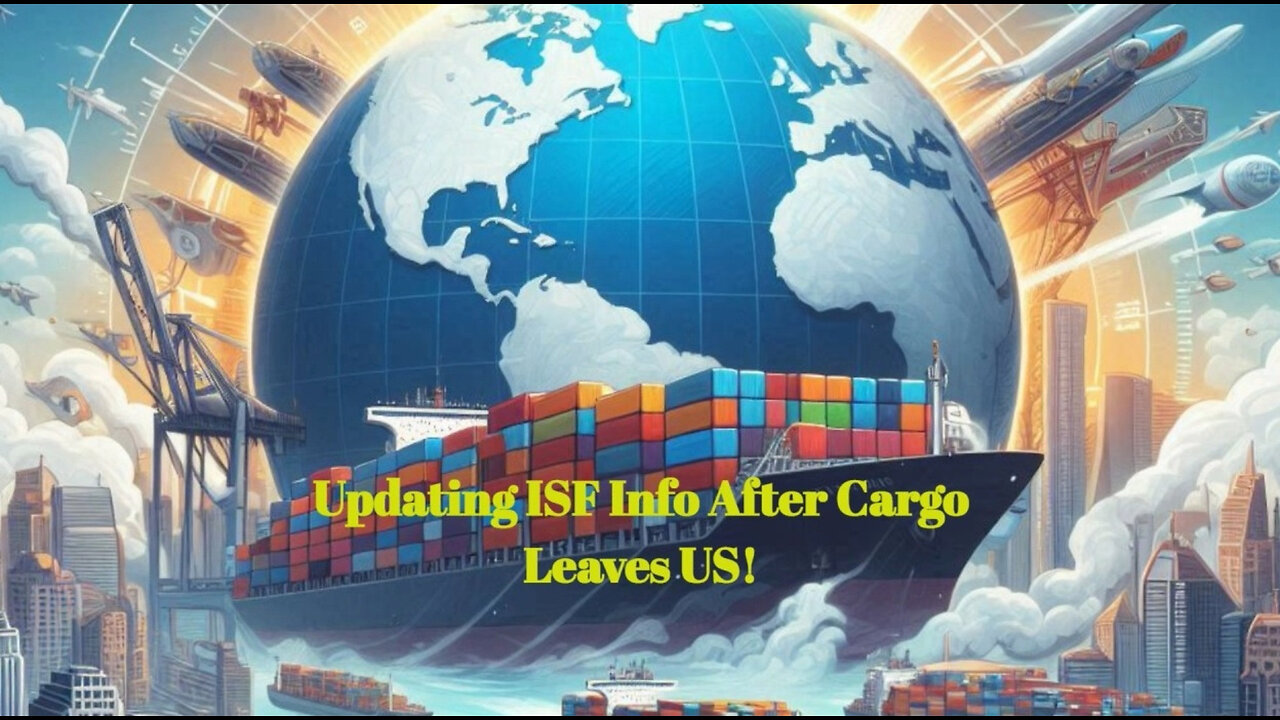Premium Only Content

Navigating ISF Updates After Cargo Departure: What You Need to Know
ISF Cargo | Phone: 786-865-0459
Email: isf@isfcargo.com | https://isfcargo.com
In today's video, we delved into the topic of updating ISF information after the cargo has left the US and arrived at its foreign destination but before it is released by foreign customs authorities. We discussed the importance of providing accurate and timely information and the implications of updating ISF information in different situations. For minor changes, such as typographical errors or contact details, the process can often be handled through an amendment or revision process. However, for more significant changes, coordination with foreign customs authorities and other involved parties is necessary. We emphasized the need for proactive monitoring, communication, and collaboration to minimize delays and ensure compliance with foreign customs regulations.
#ISFupdate
#CustomsBroker
#ImportRegulations
#ForeignCustoms
#InternationalTrade
#CargoClearance
#CustomsProcedures
#ImportCompliance
#FreightForwarding
#ISFRequirements
Video Disclaimer Here: This content is for educational use and not associated with any US government body.
"00:49 - ISF Information Updates: Updating Importer Security Filing (ISF) information after cargo has left the US and reached a foreign destination is essential for compliance, but the process varies by country and is governed by foreign customs regulations.
01:25 - Assessment and Minor Changes: Customs brokers should assess the need for updates, and minor changes (like typographical errors) can often be resolved through an amendment or revision process submitted to foreign customs authorities.
01:57 - Significant Changes and Coordination: For major updates such as changes in cargo description or value, additional steps are required, including engaging with foreign customs and coordinating with freight forwarders and carriers for support documentation.
02:30 - Managing Delays: Delays may occur while updating ISF information after cargo arrival, necessitating proactive monitoring and communication among all parties involved to minimize potential holdups at the port.
"
-
 4:31:24
4:31:24
nickelsYT
15 hours ago $29.69 earned🔴LIVE-First Day on Rumble Warzone Area 99 Big Map...Proximity Fun
64.3K1 -
 9:18:07
9:18:07
cbsking757
15 hours ago $26.33 earned★FINISHING NEBULA BEFORE WE START THE ABYSS GRIND! #callofduty #blackops6
61.5K3 -
 5:14:30
5:14:30
SpartakusLIVE
15 hours agoGIGA Spart exudes PEAK MASCULINITY
79.5K5 -
 45:41
45:41
Stephen Gardner
15 hours ago🔥Elon Musk’s SHOCKING Role in Trump’s Plan to EXPOSE DC Criminals | Errol Musk Speaks Out!
167K209 -
 20:10
20:10
DeVory Darkins
21 hours ago $33.97 earnedThe View ERUPTS Over Call for Biden to Pardon His Son
118K208 -
 5:14:10
5:14:10
GamingChad
17 hours agoMS Flight Simulator 2024 - Lets Make this Turkey Fly -Career mode Pt.2
122K9 -
 5:00:01
5:00:01
Pepkilla
18 hours agoHappy Thanksgiving ~ Wumble StwEeeem
79.5K5 -
 7:24:25
7:24:25
Rotella Games
1 day agoThanksgiving Side Missions & Hangout | GTA San Andreas
87.8K7 -
 4:07:31
4:07:31
MafiaTwin
17 hours agoFrist Stream On Rumble
64.4K3 -
 19:41
19:41
Neil McCoy-Ward
21 hours agoFinally! Some Good News Today... (& Happy Thanksgiving!)
51.6K44